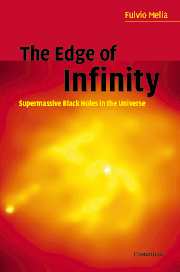4 - Formation of supermassive black holes
Published online by Cambridge University Press: 11 August 2009
Summary
Though some Hubble images of distant galaxies feature destructive collisions that could trigger quasar activity, others show that many normal, undisturbed aggregates of stars are oblivious to the cosmic thunder within their midst. This is an indication that a variety of mechanisms – some quite subtle – may be responsible for igniting a quasar. Whatever the formative process is, however, these supermassive objects seem to have spared their hosts from any obvious damage, so their prodigious outpouring of matter and radiation may be a shortlived phenomenon. Still, this observation is not sufficient to guide astronomers toward the identification of a coherent, single pattern of quasar birth and growth.
For years, astrophysicists concerned with the nature of supermassive black holes have been asking themselves a cosmological “chicken and the egg” question: “Which came first, the gargantuan pit of closed spacetime, or the lively panorama of gilded stars and glowing gas that we call a galaxy?”
Prior to a remarkable recent discovery that now seems to have answered this question for the majority of cases, the evidence in favor of black holes appearing first was anchored by the telling observation that the number of quasars peaked 10 billion years ago, early in the universe's existence. The light from galaxies, on the other hand, originated much later – after the cosmos had aged another 2 to 4 billion years.
- Type
- Chapter
- Information
- The Edge of InfinitySupermassive Black Holes in the Universe, pp. 63 - 91Publisher: Cambridge University PressPrint publication year: 2003

